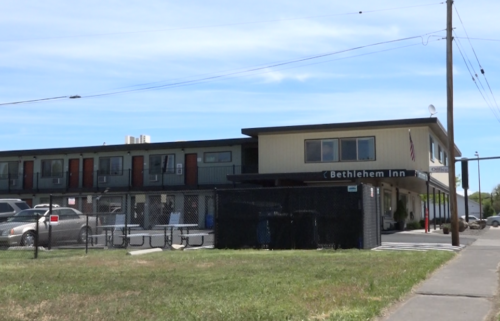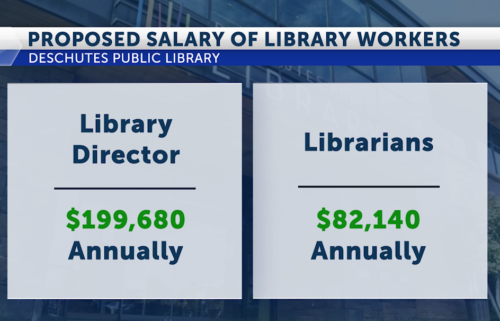Bend Park and Rec Board welcomes new trails ‘action plan’
(Update: Adding comments)
Staff also asks to extend three-year strategic plan by two years
BEND, Ore. (KTVZ)-- The Bend Park and Recreation District is reprioritizing trail projects by applying new scoring methodology to projects identified in a comprehensive plan.
The scoring criteria in a draft trails action plan that was up for discussion at Tuesday night's board meeting covers several different areas of interest including population density, the demographics of people living here, support for non-motorized transportation, and connections to other regional trail networks.
The updated trails plan serves two main functions:
1. It reprioritizes trail projects identified in the district’s Comprehensive Plan, using updated criteria that include an analysis of population density and other key demographic indicators.
2. It identifies important planning focus areas, outreach efforts, and asset management projects designed to enhance the quality and usability of the district’s trail system.
The plan also considers Bend's proposed bicycle network and prioritizes projects that connect to it.
Bend resident Runi Kanth utilizes trails in the area frequently. has concerns when it comes to updating trails, specifically expanding them -- carefully.
"Is the expansion going to encroach on native habitats, native species? How do you make that balanced? That's very important," Kanth said.
As of June, Bend's trail system included more than 109 miles of varying trails.
Four trails -- the Central Oregon Historic Canal Trail, the North Unit Canal Trail, Big Sky Park Trail and Arnold Canal Trail, --are being prioritized as the highest-scoring projects for completion by the park district.
Bend Park and Recreation Trail Planner Henry Stroud told the board this new scoring criteria encompasses a multitude of factors to help the district put the best plan forward.
Stroud says they did not have a lot of previous examples to base the new methodology on, but believe it improves the overall action plan.
"We're seeing a much larger focus now on equity and learning how to use the census data, and we were able to take some advice from the city," Stroud said. "But, all in all, when you look out there, in terms of how to really prioritize trail projects, there's not a lot of examples that we can see. I think a lot of it is done by gut or opportunity."
The new methodology was met with high praise from board members, including Nathan Hovekamp, who says the scoring system gives them a "sophisticated constellation" of tools for planning.
The board also got an update on its current three-year strategic plan, which was adopted in 2019.
The plan has been slowed to address the shifting priorities caused by the pandemic and staffing shortages.
Park Planner Rachel Colston says staff members are essentially asking for a two-year extension to meet and implement specific action items.
Board members agreed the pandemic has caused issues, but they also need to be realistic with creating a timeline that can be met.
The board's vice chair, Deb Schoen, says she can understand why staff would make such a request.
"You know, it makes all kind of sense to me that we are looking at a two-year extension. Very soon we are coming up on two years of dealing with COVID-19," Schoen said. "So without a lot of explanation, extending it for two years would make a lot of sense to me."
The strategic plan is comprised of foundational pillars inclusive of employees and workplace
culture, community relationships, and operations and management practice. These pillars are supported by desired outcomes, strategies, actions and performance metrics.
The adopted plan includes 61 actions, which are the implementation focus of the plan, and something that the
district closely tracks.
Over the course of the strategic plan implementation, 19 additional action items have been added, for a total of 80.
According to Park Planner Rachel Colston, these additional action items were necessitated by the COVID-19 pandemic, which significantly strained staff resources and required that priorities be shifted to address more immediate needs.





